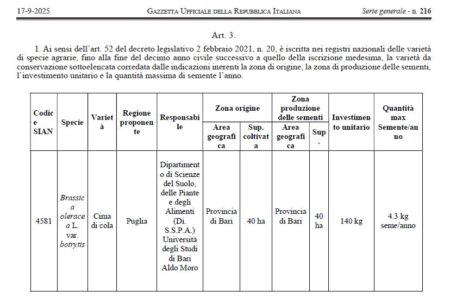- A little more safety for Ukraine’s seeds, thanks to a new genebank.
- A little more safety for Mexico’s native maize, thanks to Pres. Sheinbaum.
- A little more safety for Andean agriculture, thanks to Ecuadorian Indigenous women and Inside Mater in Peru.
- A little more safety for Ischia’s zampognaro bean and Amalfi’s lemons, thanks to local people (and GIAHS).
- A little more safety for Pacific crops, thanks to cryopreservation. Breadfruit next?
- A little more safety for moringa? At least in Africa with all its “opportunity crops”?
An enhanced MLS (hopefully) beckons
The Multilateral System (MLS) of the Plant Treaty must deliver the fair and predictable monetary benefits it promised. If, that is, we want crop diversity to continue to be available with minimal friction to all who want to use it to help ensure the world’s food security.
That at least has been the premise of the past two years of negotiations by the Plant Treaty’s Ad Hoc Open-ended Working Group to Enhance the Functioning of the Multilateral System. With the 11th Session of the Governing Body coming up in November in Lima, Peru, the report of the Working Group is now up on the Plant Treaty’s website. 1
What does it say? Are we there yet?
Well, it’s not easy reading, but let me give you what I see as the key points. Summarizing such a dense and technical document in a few sentences is tricky, so I hope I don’t misrepresent anything. Please let me know if I have, and I will make any corrections needed.
Countries agree that a subscription model would generate more, and more predictable, user contributions than the current pay-per-use approach. There also seems to be a shared view that more crops should be brought under the MLS (beyond the ones currently listed in Annex 1), to reflect importance and interdependence. But also that countries should be allowed to carve out exemptions. And finally, there is general agreement that benefits derived from the use of Digital Sequence Information (DSI) must be addressed in the MLS framework. Somehow.
Still unclear, however, are the level, timing, and conditions of payments under the subscription model. And indeed debate continues over whether pay-per-use should remain available as an option, and under what terms. There are also different views on how DSI contributions could be embedded in the subscription system; and around how to amend Annex 1, whether to include all PGRFA or adopt a phased approach. The view of the seed sector was recently well summarized in Seed World. A predictably somewhat different view comes from Third World Network.
So, though there’s definitely been a lot of progress, without bold decisions and compromises in Lima (and thereafter), the reform package could still fall short of the needs of farmers and future generations. Fingers crossed.
Nibbles: Millennium Seed Bank 25th, NPGS, Maize germplasm, Breadfruit genebank, Banana genebank
- King Charles III talks about seeds with Dr Elinor Breman of Kew’s Millennium Seed Bank and…
- …Cate Blanchett.
- Or read about it in The Economist.
- Or watch a nice video.
- The seed banks of the National Plant Germplasm System in the USA are for farmers, not just researchers.
- How to get stuff out of the NPGS.
- Laurajean Lewis: from an NPGS genebank to CIMMYT’s.
- I’m sure she and Chris Mujjabi will get to know each other soon.
- Diane Ragone: Not all genebanks are seed banks.
- Not a lot of breadfruits in Belgium but, surprisingly, lots of bananas.
‘Cima di cola’ reaches a milestone, apparently
So it seems the first vegetable variety from Puglia has been added to Italy’s Registro nazionale delle varietà da conservazione, or National Register of Conservation Varieties.
The ‘Cima di cola’, a cauliflower variety historically linked to the agricultural tradition of Bari, received official recognition by Ministerial Decree of 9 September 2025, published in the Official Gazette No. 216 of 17 September 2025, which will allow its conservation and promotion also at the commercial level.
I know this because of a post on Facebook from an outfit called Biodiversità delle specie orticole della Puglia (BiodiverSO), translated above. Which unfortunately doesn’t include a link, but does provide this screenshot of Italy’s Official Gazette to prove its point.
Here’s more from the BiodiverSO post.
The inclusion of the ‘Cima di cola’ among conservation varieties is not only an institutional achievement, but also an act of recognition toward those who have preserved its seeds and traditions over the years; a milestone that opens new opportunities for scientific, educational, and gastronomic promotion, which we look forward to sharing with you.
Doubtless.
Which is why I was pretty disappointed to find that the Registro nazionale delle varietà di specie agrarie ed ortive is not actually up to date, so doesn’t yet include ‘Cima di cola’.
Quite apart from not being exactly easy to find. And there was also nothing in the relevant news section, which is actually on a different website, but nevermind.
Anyway, there are 135 “Varietà da Conservazione” registered therein. It’s unclear how to obtain seeds.
LATER: Thanks to Filippo Guzzon for advising me that ‘Cima di cola’ is indeed on the list. I was looking for it under the wrong crop name :(
A concerted effort to conserve edible plants kicks off
Do you remember a Nibble from a few days back on how wild food ingredients are making their way into school meals in India? You may have wondered at the time if there was some kind of global initiative to conserve such wild edible plants. Because they can fall between the two stools2 of crop genebanks on one side and botanical gardens on the other.
Well, there wasn’t then, but there is now. Say hello the Global Conservation Consortium for Food Plants. Just launched, with the NY Botanical Garden hosting the secretariat.

